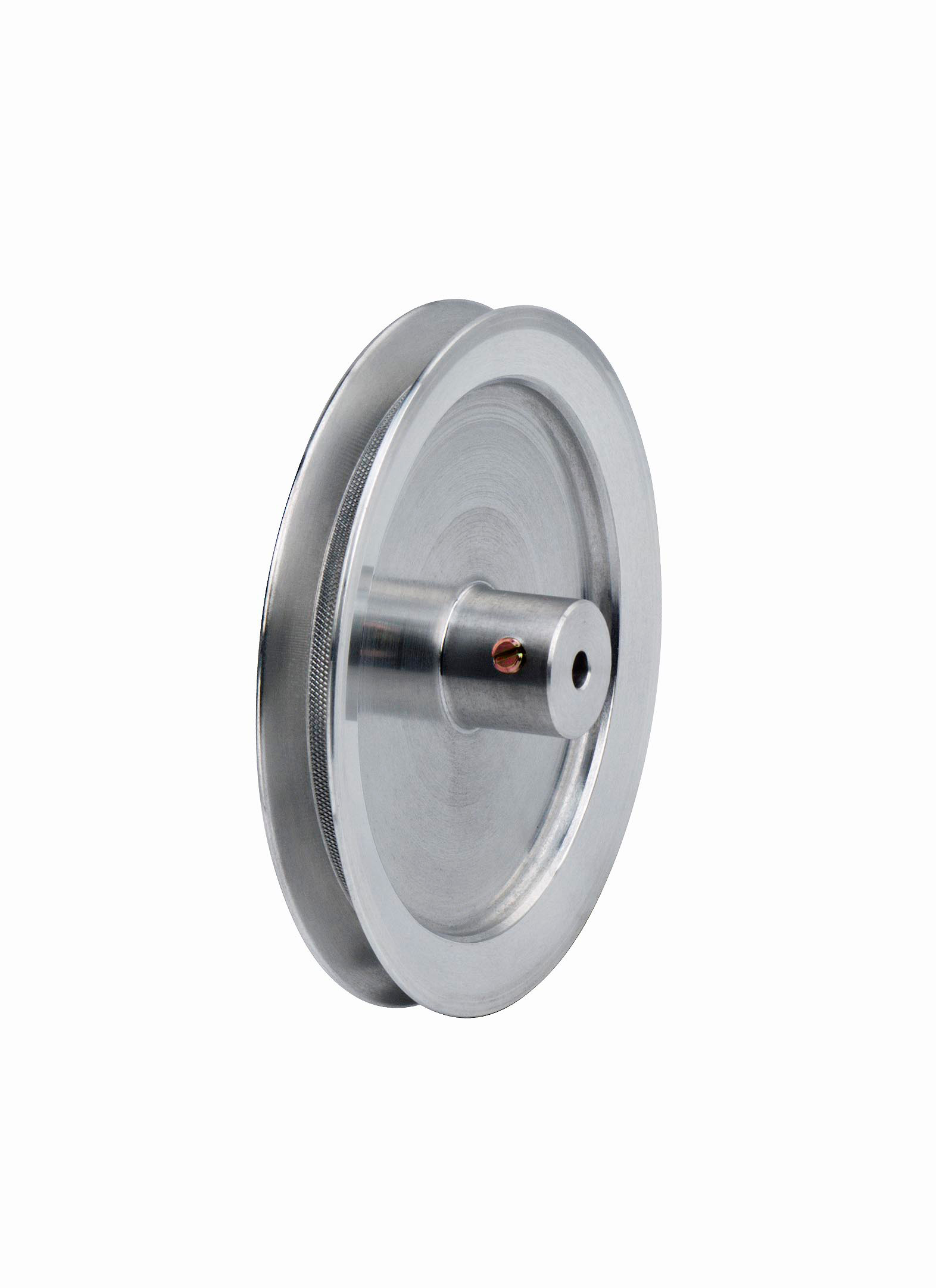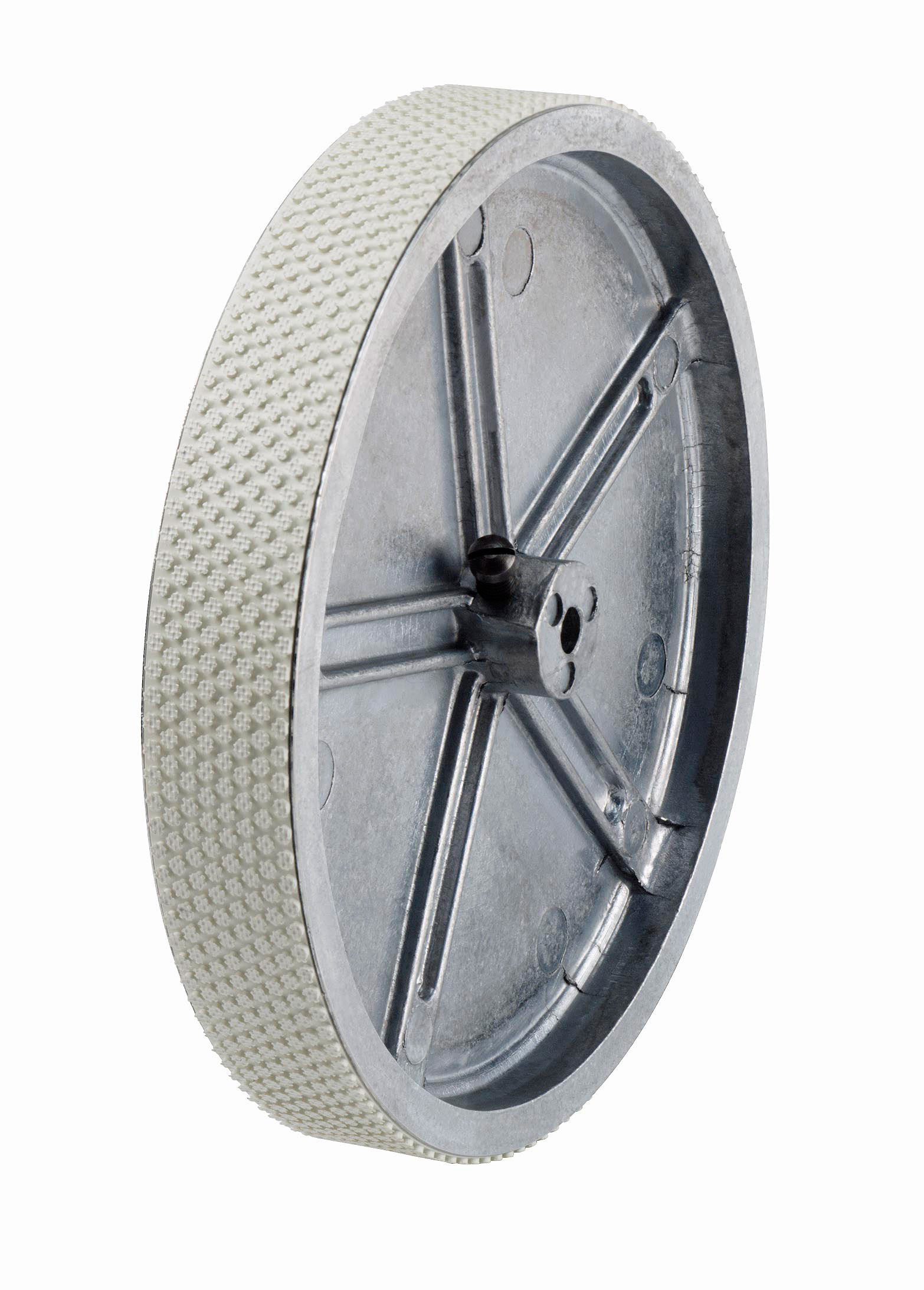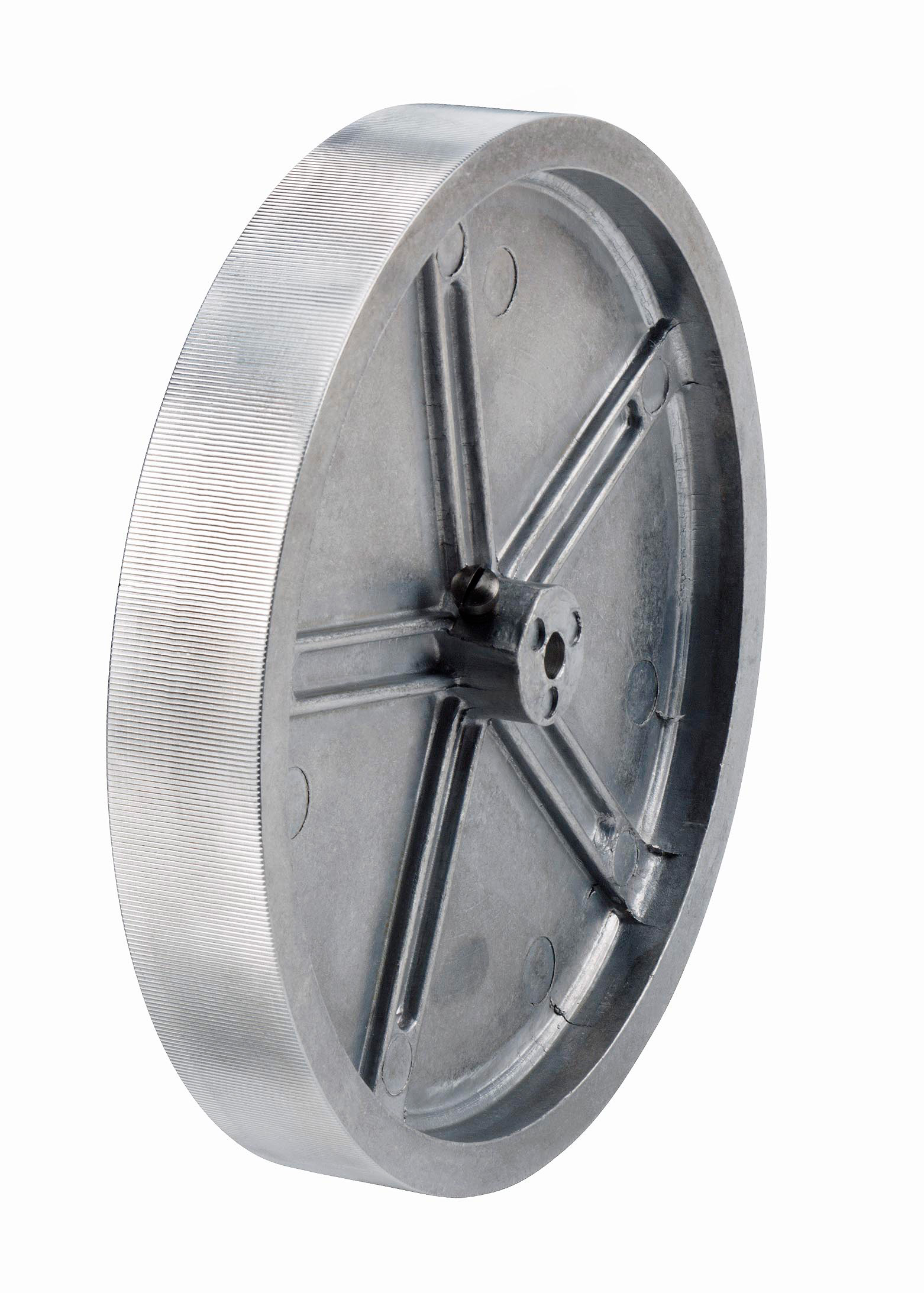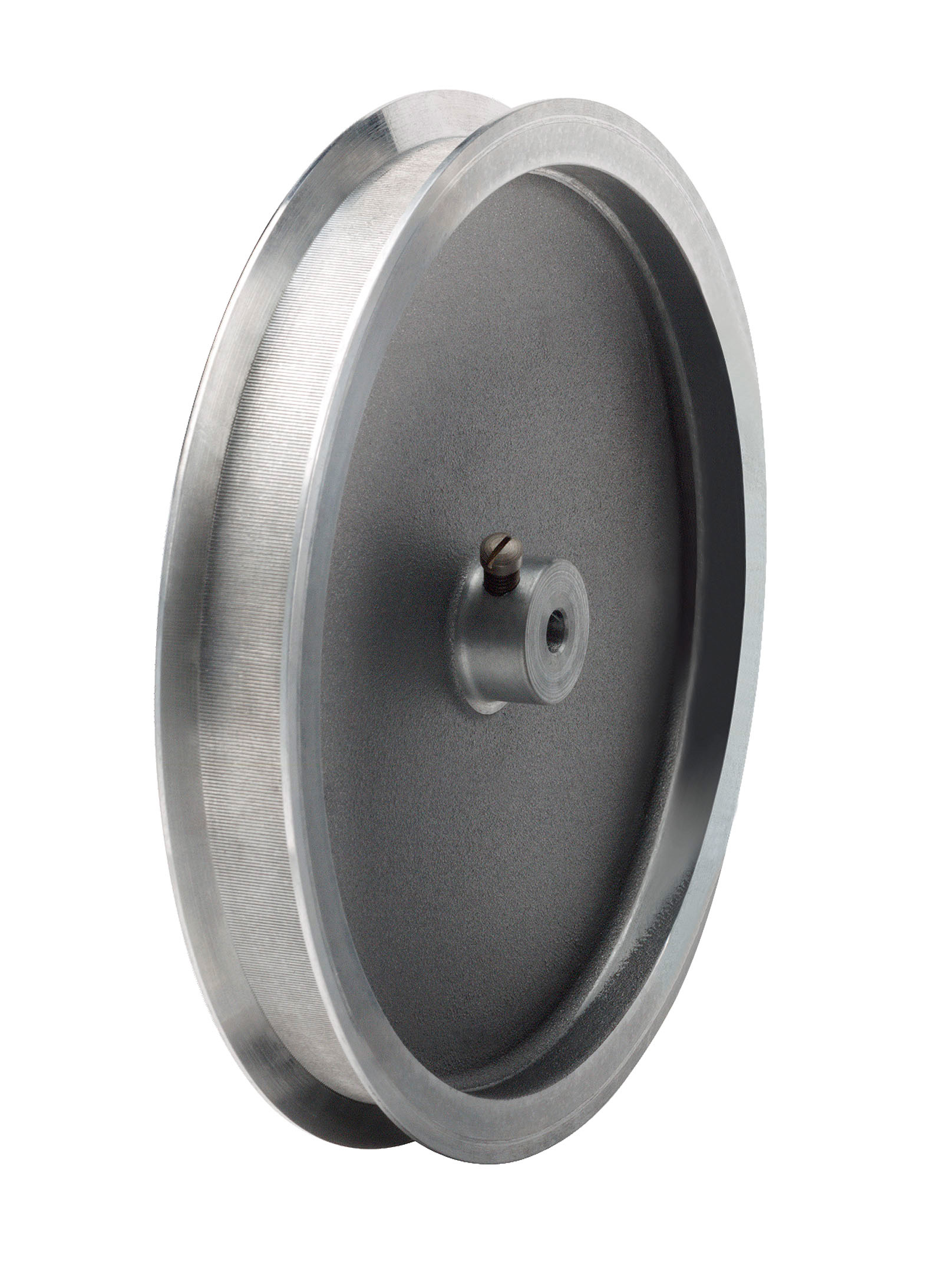| Famiglia di prodotti | Ruote di misura |

In order to prevent the result being distorted when the shaft encoder is driven by a measuring wheel make sure that the slip is as small as possible. When selecting the tread (surface), take into account the structure, stretchability, thickness, and resistance to being carried along of the material being measured.
The slip is also affected by the width of the measuring wheel, the contact pressure, the tension in the material being measured, and the arc of contact. The arc of contact should be as large as possible. The wheel bodies are made of cast aluminium or plastic (as marked).
The position of the measuring wheel should be chosen so that the direction of movement of the material is away from the shaft encoder’s bearing point.
 |  |
 |  | Tread 1
with rim and fine crosshatched knurl Material: aluminium Applications such as threads and yarns |
 |  | Tread 2
with glued-on rubber profile Applications such as paper and cardboard, measuring cables, nongreasy metals, fleece, undressed or surface-treated wood, soft and hard plastics. |
 |  | Tread 3
vulcanized rubber surface with parallel knurl Applications such as rubber, leather, fabrics, flooring and glass. |
 |  | Tread 4
|
 |  | Tread 5
|
 |  | Tread 6
|